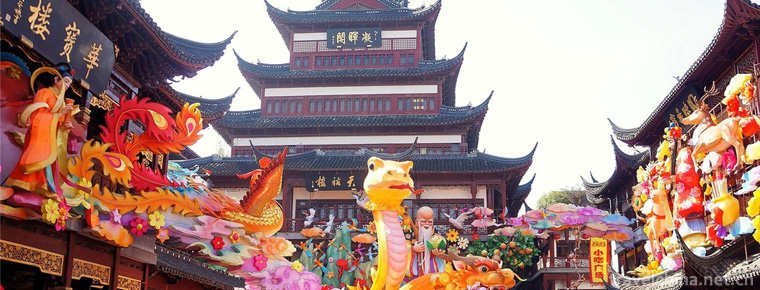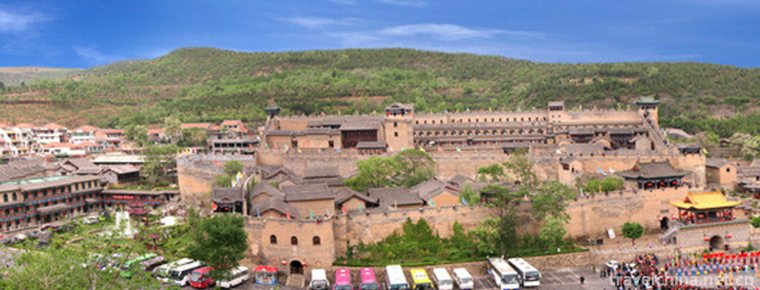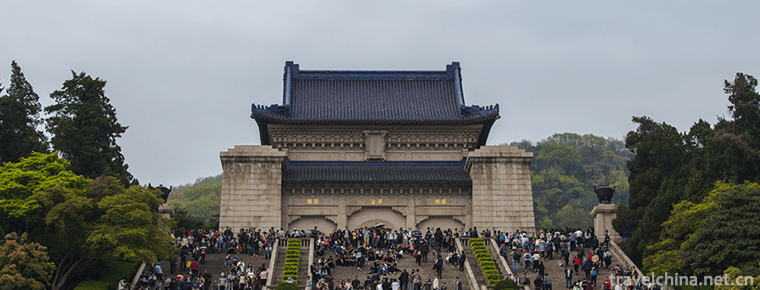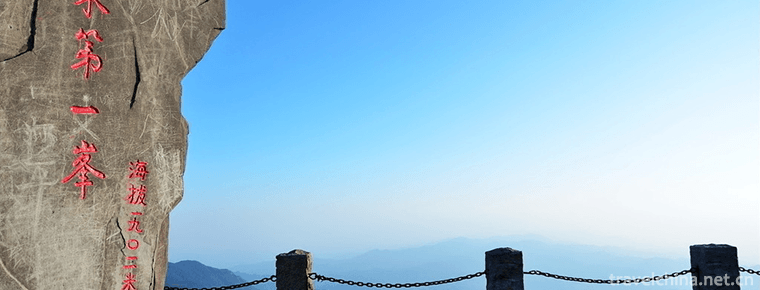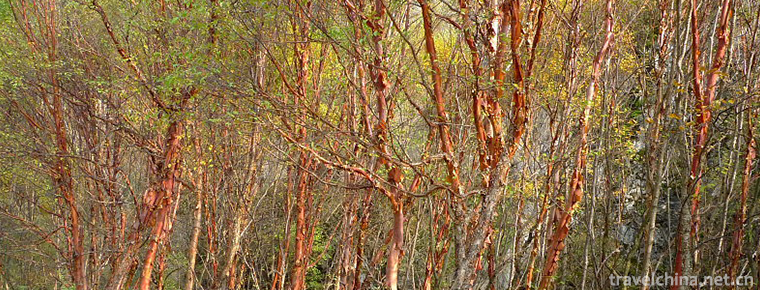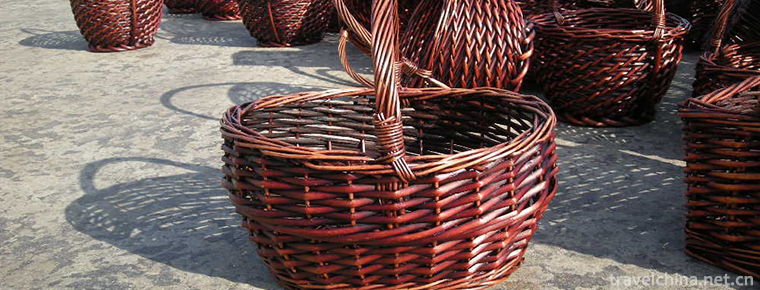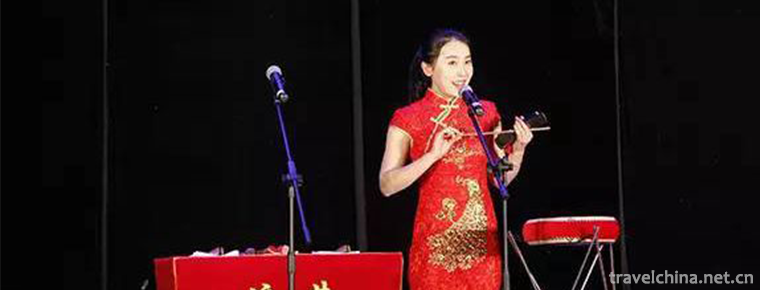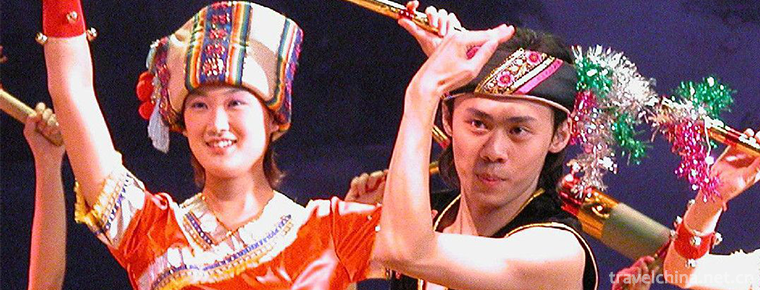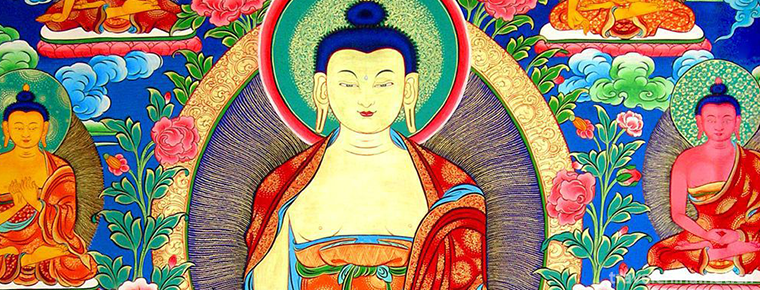The AncientCity of Lang Zhong
Langzhong Ancient City is a national AAAAA-level tourist attraction, a thousand-year-old county, the hometown of Chinese Spring Festival culture, one of the four ancient cities in China.
Langzhong Ancient City is located in the northeastern margin of Sichuan Basin and the middle reaches of Jialing River. The "5A" scenic area of Langzhong Ancient City covers a total area of 4.59 square kilometers and the core area of the ancient city is 2 square kilometers. As of 2015, the ancient city has a history of more than 2300 years, and is an important military town of the ancient Baguo and Shu Kingdom.
There are eight national key cultural relics protection units in the ancient city of Longzhong, including Zhangfei Temple, Yongan Temple, Wulong Temple, Tengwang Pavilion, Guanyin Temple, Baba Temple, Dafo Temple and North Sichuan Daogongyuan. There are Shaojiawan Tomb Group, Wenbi Tower, Stone Room Cliff Sculpture, Leishendong Cliff Sculpture, Niuwangdong Cliff Sculpture, the old site of the General Political Department of the Red Army, Huaguang Building and other provincial cultural relics protection units.
In February 2010, Langzhong City was awarded the title of "Township of Chinese Spring Festival Culture". In September 2013, Langzhong Ancient City Tourism Area was approved as a national 5A-level tourist attraction.
Historical evolution
Langzhong Shang and Zhou Dynasties belong to Liangzhou. The Spring and Autumn Period is a national conquest. In the late Warring States Period, the state of Ba was destroyed and its capital was moved from Jiangzhou to Langzhong.
Langzhong County, located in Qin Dynasty, belongs to Bajun County. Han Langzhong is a Brazilian county, Zhang Fei has been in charge for seven years.
Langzhong in the Eastern Jin Dynasty was the prefecture of northern Brazil. Langzhong in the Western Wei Dynasty was ruled by Longzhou and Panlong County.
The Sui Dynasty changed Langzhong to Langnei and Longzhou to govern. Daye three years, Changlong County for Brazil.
Tang was still named Langzhong and ruled by Longzhou. In the Five Dynasties and Northern and Southern Song Dynasties, Langzhong was ruled by Langzhou.
In the late Ming and early Qing Dynasties, Sichuan Province set up temporary provincial capital for 17 years. During Shunzhi period, the provisional provincial capital of Sichuan was established in Langzhong for more than 10 years.
In the first year of the Republic of China (1912), a consolation mission was set up in Langzhong.
In the second year of the Republic of China (1913), it was replaced by the Northern Sichuan Observatory.
In the three years of the Republic of China (1914), it was changed to Chuanbei Dao Department, and soon to Jialing Dao Department, which was transferred to Nanchong.
On December 29, 1949, the Chinese People's Liberation Army took over Langzhong.
On January 8, 1950, the Langzhong County People's Government was established.
In August 1993, Langzhi was listed as a provincial municipality directly under the Central Government and was managed by Nanchong City.
In September 2013, Langzhong Ancient City Tourist Area was approved as a national 5A tourist attraction.
geographical environment
geographical position
Longzhong Ancient City is located in the north of Sichuan Basin, in the middle reaches of Jialing River, east of Yilong and Bazhong, south of Yilong, west of Jiange, north of Cangxi, 300 kilometers away from the provincial capital Chengdu.
Climatic characteristics
Langzhong Ancient City belongs to the subtropical humid monsoon climate zone with mild climate, abundant rainfall and moderate light. The average annual temperature is 17 C. The extreme maximum temperature is 39 C and the minimum temperature is - 4.6 C. The annual frost-free period is 290 days, with an average annual sunshine of 1379.8 hours and an average annual precipitation of 1033.9 mm.
Main attractions
Han Huanhou Temple, commonly known as Zhang Fei Temple, is also known as Xiongwei Temple in Ming Dynasty. Huanhou Temple is a quadrangular courtyard-style ancient building complex reconstructed in Ming and Qing Dynasties. It covers an area of more than 5,000 square meters and has a large scale and exquisite construction. It consists of mountain gates, enemy buildings, left and right archways, East and West chambers, halls, back halls, tomb pavilions and tombs. Its building area is 2,200 square meters, which is a great cultural attraction of the Three Kingdoms.
Wulong Temple is located at the foot of Wulong Mountain in Baihu Village, Helou Township, Luzhong. Founded in the Tang Dynasty, it was rebuilt in the three years from Yuan to Zhengzheng (1343). It covers an area of 4 Mu and a building area of 100 square meters. The original mountain gates, theatre buildings, left and right compartments and Wenchang Pavilion were destroyed. There are only Wenchang Pavilion, a cultural relic of Yuan Dynasty, which belongs to all-timber structure. Its architectural style is a single-eaved Xieshan roof covered with cloth-tube tiles. Its surface is three rooms wide. The side feet of the eaves are obvious. Six pavers under the front eaves are used to arch the doubles: the first cantaloupe arch is wing-shaped, and the second one is oblique arch, which is very unique. 。
Yongan Temple is located in Huangnigang, 5 kilometers northeast of Shuiguan Town, surrounded by mountains, about 40 kilometers from Langzhong City. Founded in the Tang Dynasty, Song Zhiping, Yuan to Zheng Dynasty, Ming and Jiajing Dynasties, it was often cultivated. It covers an area of 4000 square meters. It covers an area of 10,000 square meters and has a building area of 1,700 square meters. It is an ancient building complex consisting of buildings of Yuan and Qing dynasties, and it is an overhanging eaves and Mountain-style building. All the six techniques of architecture, algae decoration, stone carving, wood carving, clay sculpture and painting in the temple are excellent and constitute the whole.
The tribute courtyard of Chuanbei Dao was rebuilt in Xuedao Street in the city and in Jiajing in the Qing Dynasty. It was originally composed of mountain gate, corridor, examination room, hall, second hall, back hall and examinee dormitory. The existing curtain-type corridor is more than 50 meters long in length and breadth. The wooden railings on both sides of the corridor are equipped with Feixian chairs. There are two rows of examination rooms, separated by each other, decorated with carvings. So far, it has been well protected and is one of the only two test rooms left in the country. Examination shed in Qing Dynasty is the common name of tribute courtyard of North Sichuan Road. The imperial examination system is a one-minute system for selecting reserve talents of civil and military officials in feudal dynasty. In the early Qing Dynasty, Langzhong took the place of Sichuan Provisional Capital for 17 years. There were four subjects of rural examination held here.
Tengwang Pavilion was built in Yutai Mountain north of Langzhong City. Like Tengwang Pavilion in Nanchang, Tengwang Yuanying, the 22nd son of Li Yuan, Gaozu of Tang Dynasty, built it. In 679, King Teng was transferred from Shouzhou to Longzhou (Langzhong) to build Longyuan (Longyuan when Xuanzong changed to Langyuan) and Yutai Guan and Tengwangting Pavilion in Yutai Mountain for his amusement. Du Fu had "Two Poems of Tengwangting Pavilion". There is a Buddha of Tang Dynasty on the platform of His Excellency King Teng. The pagoda is a large and small sphere with a boat niche in the middle and a Buddha stumbling and sitting in the lotus terrace. Upper mounted tower brake, there are stone carving 8 Lishi lifting brake body. The brake body is a hexagonal pillar with one Buddha on each side.
Jinpingshan is a national AAAA scenic spot, located in the southern suburb of Langzhong ancient city. Because of the "miscellaneous flowers and trees, two peaks line up like a screen", people usually call it Jinpingshan. Wu Daozi once took Jinping Mountain as the axis to describe the 300-mile "Jialing River Mountain Map", praised by Du Fu's poem "Langzhou City is rare in the South under heaven". After more than a thousand years of decoration, Jinping is more gorgeous and colorful, known as "Langyuan Wonderland" and "Jialing No. 1 Jiangshan" reputation. With an elevation of 480 meters and an area of more than 20 square kilometers, there are top-ranking mountains in the east, Majiashan in the West and Niujiashan in the north, which form the natural barrier of Langzhong ancient city. Baba Temple is a holy place for Muslims of Gadeye Sect of Islam. It is located at the south foot of Panlong Mountain in the Northeast suburb of Langzhong City. Baba Temple, also known as "Jiuzhao Pavilion", means "ancestor" in Arabic. During the reign of Kangxi, Huazhe Abdullahi, a Muslim in Mecca, Saudi Arabia, died and was buried here and built a temple when he taught Islam in Langzhong. It has a history of more than 300 years. Baba Temple is a rare Islamic architectural complex in China, which consists of mountain gates, Zhaobi, archways, halls, flower halls, well pavilions and gardens.
Dongshan Garden is located in Langzhong Qili Economic Development Zone, which is only one river away from the main urban area of Langzhong. The scenic spot covers an area of more than 200 mu. There are one national cultural relic unit (Tang Dynasty Buddha) and two provincial cultural relic units (North Song Zhongyuan Cave and Ming Baita).
In the core reserve of Langzhong ancient city, the former residence of Xiahuang (Constellation Garden) is a pearl-like two-entry residential compound rebuilt in memory of the world's outstanding ancient astronomer and calendar, and the elderly of Chinese Spring Festival. Located in the north and south, covering an area of about 400 square meters, there are 16 houses with wooden piercing structure, carved doors and windows, and green tile roof. January 29, 2006 (the first day of the first lunar month of the third lunar year) was officially opened to visitors.
Langzhong Great Buddhist Temple is located in the south of Langzhong, at the foot of Daxiang Mountain on the opposite side of Jialing River. It was named Daxiang Temple in the beginning, Yongan Zen in the Song Dynasty, and the old name was restored in the Ming Dynasty. The monastery covers an area of 6 hectares, with the Buddha, the statue of Sakyamuni, as its main attraction. According to the inside wall of the cliff niche (kn), inscribed in the book He Jushi Ji of the Jingshe of the Dongshan Great Elephant in the Tang and Yuan Dynasties and in the fourth year (809), why is this Buddha inscribed? It has a history of 1100 years and is one of the top ten Buddhist sittings in Sichuan. In Ming Dynasty, it was called Daxiang Temple, also known as Dafo Temple.
Guanyin Temple was originally built in the early Tang Dynasty as Kaiyuan Temple, a famous temple in the Tang Dynasty. It is mainly composed of four parts: Tianwang Hall, Luohan Hall, Daxiong Hall and Songhua Well. According to historical records, it was the largest temple in Langzhong until Yuan and Ming Dynasty. Later, with the passage of time, Kaiyuan Temple was destroyed. In 1496, Shouwang Hufeng Fan Baoning built a palace in Xicheng and relocated the Guanyin Temple in the early Ming Dynasty to the old site of Kaiyuan Temple for reconstruction. Thus, Guanyin Temple replaced Kaiyuan Temple as the largest monastery in Brazil.
Laoguan Town is located in the northeast of Langzhong City, 45 kilometers away from the urban area of Langzhong City, passing through the provincial highway 302, which is the central town in the north-east of Langzhong City. Laoguanchang Town has a construction area of 5.5 square kilometers and a permanent population of 30,000. In 2012, it was jointly appraised as "the most protected ancient town in Sichuan" by the Provincial Department of Housing, Construction and Culture. Laoguan Town, commonly known as the "dry wharf" in northern Sichuan, is the first town of Gumi Cang Road out of Sichuan. With a long history and profound cultural heritage, Fengguo County has a history of over 1500 years (including 732 years in Fengguo County). It has 4 hectares of well-preserved ancient buildings and 48 sites. It is the birthplace of "Spring Festival Culture and Northern Sichuan Lantern Opera".
Tourism information
Tickets for scenic spots
Langzhong Ancient City One Ticket to Adult Ticket: 120 yuan per person
Half-price ticket: 60 yuan per person (children, old people, students)
Tiangongyuan Fengshui Cultural Scenic Spot: 40 yuan/person
Opening Hours
Langzhong Ancient City
(1) From 8:00 to 18:30 on May 1-October 7
(2) From 8:00 to 18:00 on October 8-May 30
(3) Effective within three days, each scenic spot can only be visited once.
Tiangongyuan Fengshui Cultural Scenic Spot
(1) From 8:30 to 18:00 from 1 May to 7 October
(2) 8:00-17:30 October 8-May 30
Traffic guide
Aircraft
1. The ancient city of Langzhong in Shuangliu International Airport, Chengdu, all over the country
2. Chongqing Jiangbei International Airport, Langzhong Ancient City, all over the country
3. Beijing, Shanghai, Guangzhou, Shenzhen, Kunming Xinanchong Airport Xizhong Ancient City
4. Langzhong Ancient City of Beijing, Hangzhou and Shenzhen Xiguangyuan Airport














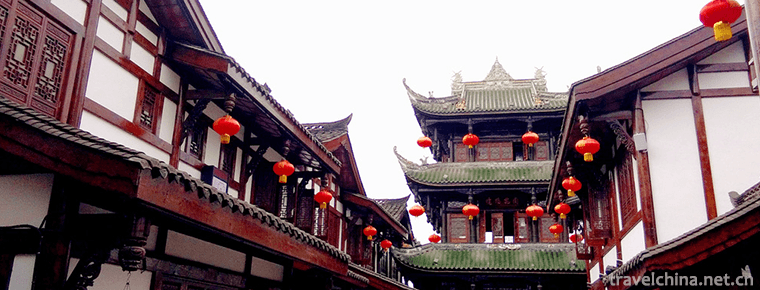
-
Town God TempleChenghuang Temple
Located in Shanghai's Huangpu District Fang Bang Road.
Views: 153 Time 2018-10-12 -
Royal Prime Ministers Palace
Huangcheng Xiangfu (National AAAAA Scenic Area) is located in Beiliu Town, Yangcheng County, Jincheng City, Shanxi Province..
Views: 144 Time 2018-11-24 -
Zijin Mountain Scenic Area
Zhongshan Scenic Spot, or Zhongshan Scenic Spot for short, is located in Zijin Mountain, Xuanwu District, Nanjing City. It is a famous scenic spot in China.
Views: 154 Time 2018-12-06 -
Guangdong First Peak Tourist Scenic Spot
Guangdong First Peak Tourist Scenic Area is the largest oasis on the Tropic of Cancer. It has a large area of primitive forests, stable forest ecosystem, dense evergreen broad-leaved forests.
Views: 126 Time 2019-01-13 -
The tru Valley
Turugou is located in Liancheng Forest, Yongdeng County, 160 kilometers northwest of Lanzhou City. It belongs to the eastern foot of Qilian Mountains..
Views: 198 Time 2019-02-22 -
Willowerwork
Willow knitting is one of the traditional handicraft products in China. In ancient times, people were just ordinary daily necessities. It was not until the late 20th century that they began to rise gr.
Views: 135 Time 2019-05-14 -
monologue storytelling accompanied by drumbeats
Plum blossom drum, born in the middle of the Qing Dynasty, originated in Beijing, is popular in Beijing and Tianjin. Before liberation, the sons and daughters of Beijing Banner People liked to sing me.
Views: 256 Time 2019-06-03 -
Mi Luo Tuo
Milotta is a myth and ancient song spread in the Yao nationality inhabited areas of Du'an and Bama in Guangxi. It integrates myth, creation and hero. It describes the heroic achievements of the goddes.
Views: 147 Time 2019-06-04 -
regong art
Regong art is an important part of Tibetan Buddhist art in China and a school with wide influence. It originated in Longwu River Basin in Tongren County, Huangnan Tibetan Autonomous Prefecture, Qingha.
Views: 354 Time 2019-06-11 -
Cai Lun
Cai Lun(?-121 years ) Zhong Zhong, a member of Guiyang County in Eastern Han Dynasty. Emperor Ming of Han Yongping entered the palace in the end, Zhang and two years (AD 88). Cai Lun was promoted to t.
Views: 290 Time 2019-09-06 -
Erwang Temple
The Erwangmiao ancient building complex is located at the foot of Yulei mountain outside the west gate of today's Dujiangyan, which is an important part of the world cultural heritage Dujiangyan. The temple was built in memory of Li Bing and his son Erlang. The Erwang temple was first built in the northern and Southern Dynasties.
Views: 439 Time 2020-11-08 -
Evolution of Chengdu Giant Panda Base
Chengdu Giant Panda Breeding Research Base is established on the basis of raising, treating and breeding giant pandas in Chengdu Zoo. In the 1980s, Fargesia FRIGIDA in Qionglai mountains blossomed and died. Some giant pandas were rescued and concentrated in Chengdu Zoo for lack of food and hunger..
Views: 106 Time 2020-12-13
